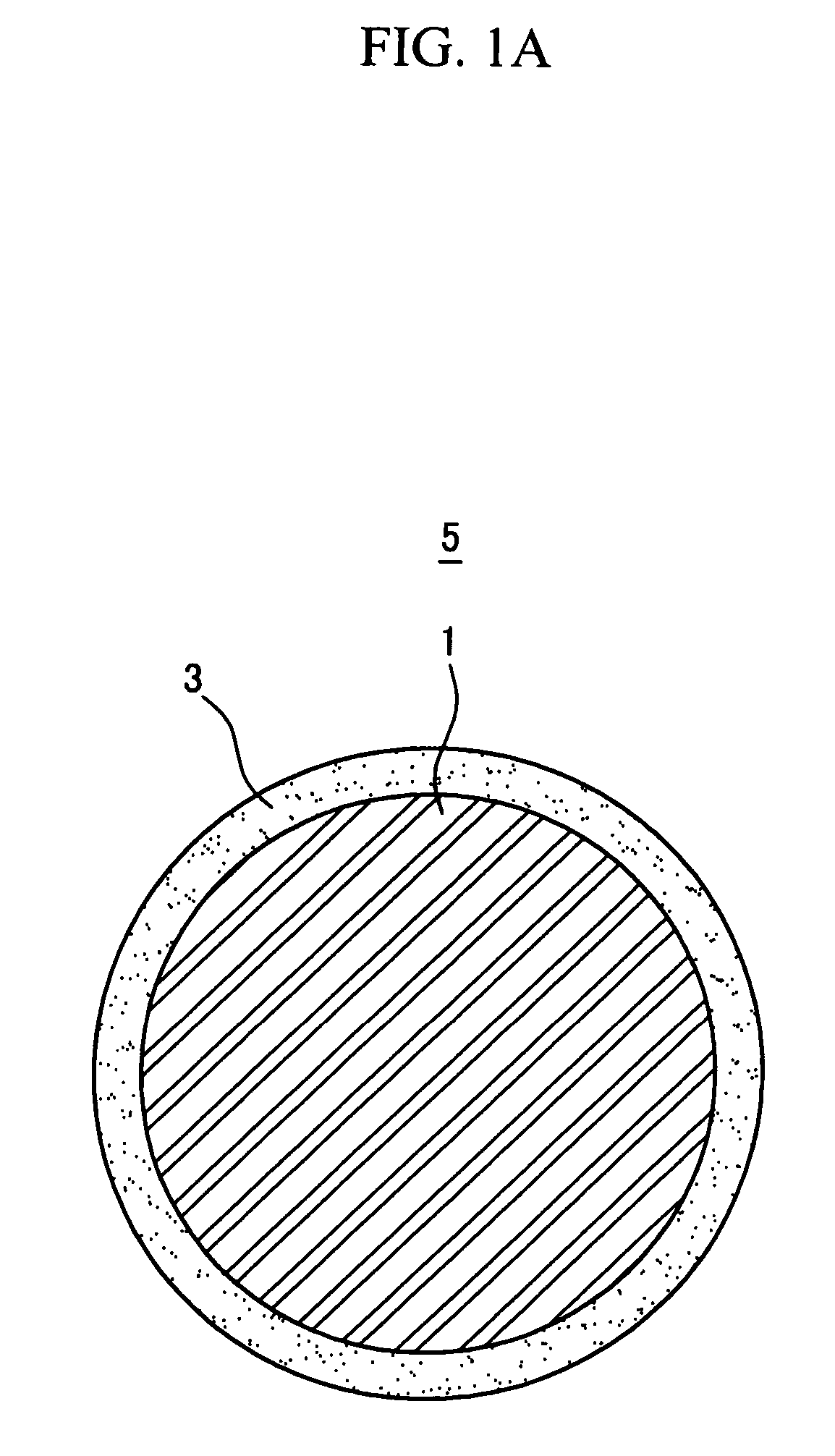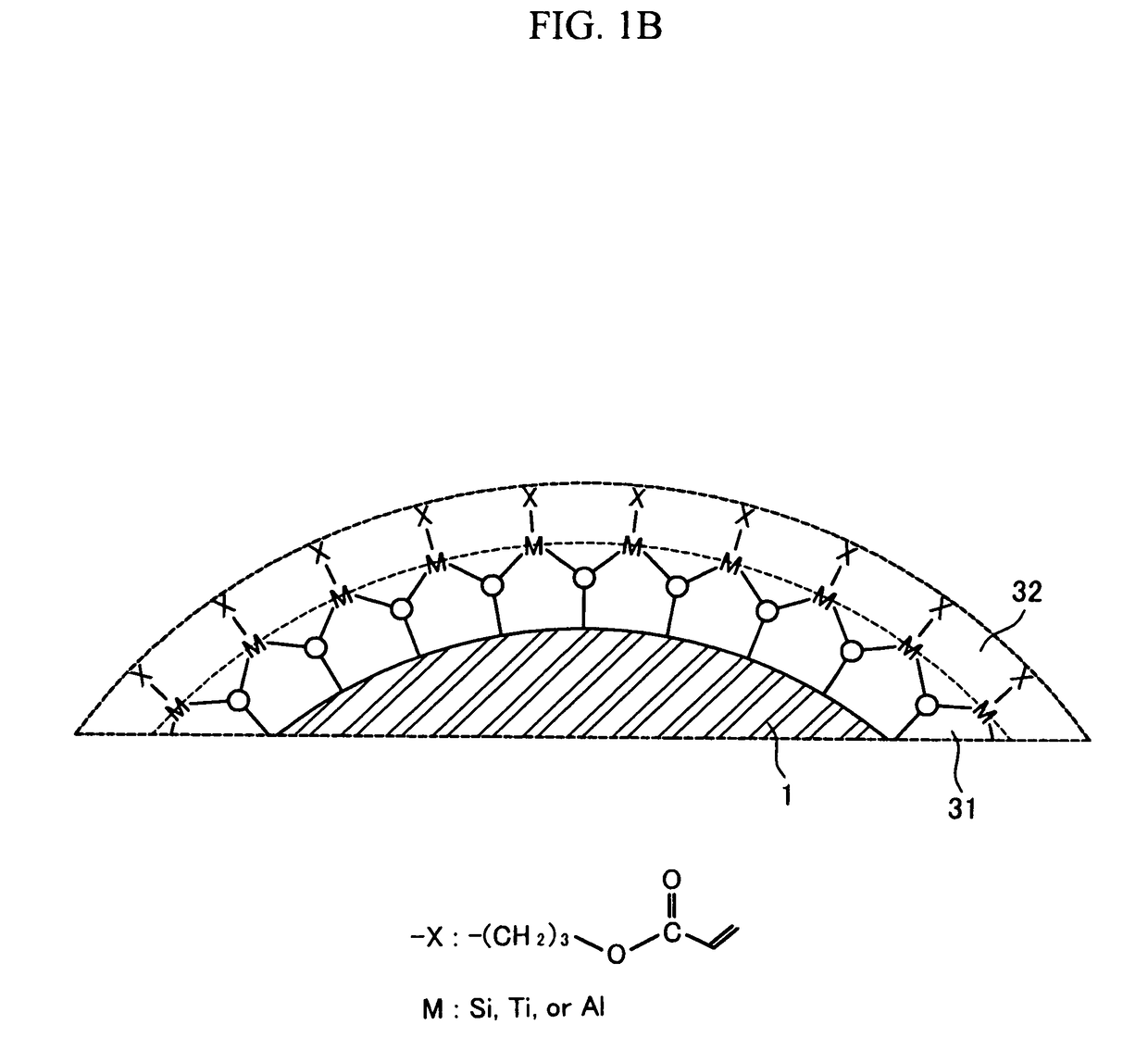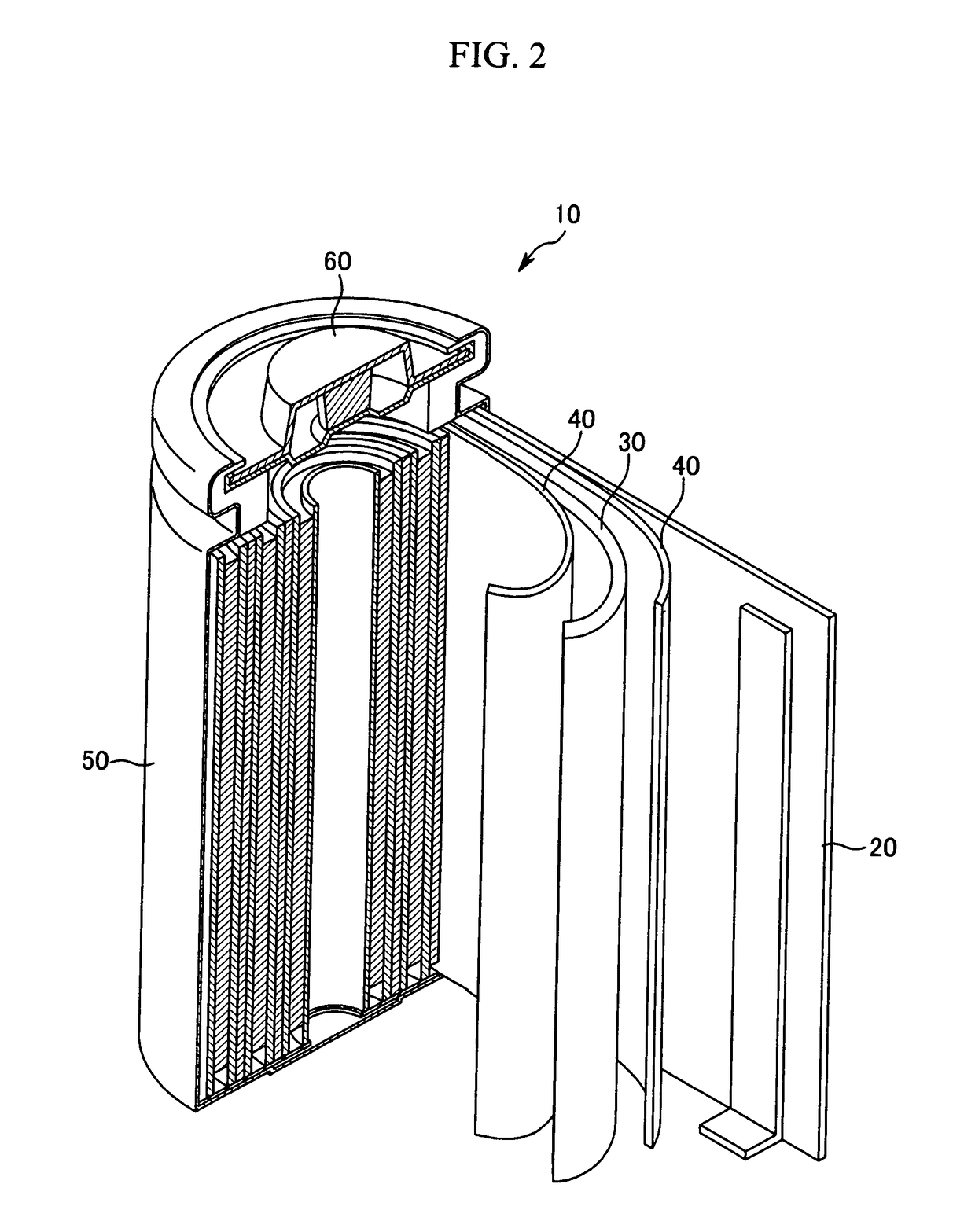Negative active material for rechargeable lithium battery, method of preparing same and rechargeable lithium battery including same
a technology of active materials and rechargeable lithium batteries, which is applied in the direction of electrochemical generators, cell components, coatings, etc., can solve the problems of increasing irreversible capacity of carbonaceous materials, reducing initial coulomb efficiency, and carbonaceous materials imparting disadvantageous energy densities, etc., and achieve excellent reversible characteristics
- Summary
- Abstract
- Description
- Claims
- Application Information
AI Technical Summary
Benefits of technology
Problems solved by technology
Method used
Image
Examples
example 1
[0044]1 g of a core material containing silicon (average particle size of 10 mm) was dispersed in 100 Ml ethanol to provide a first solution. A 0.2 M ammonia solution in which ammonia was mixed with water in a volume ratio of 29:71 was then introduced to the first solution, and the resulting mixture was uniformly mixed to provide a core solution.
[0045]A 3-(trimethoxysilyl)propyl methacrylate precursor in an amount of 10 wt % based on the weight of the core material was mixed into 1 Ml of ethanol and 1 Ml of water to provide a precursor solution. The precursor solution was rapidly added into the core solution. Hydrolysis and condensation reactions were carried out on the surface of the negative active material (i.e. on the surface of the core material). Thereby, a coating layer was formed on the negative active material. The coating layer had a reticular structure in which SiO2 was covalently bonded to an organic chain. The coating layer was formed to a thickness of 20 nm.
[0046]A Fou...
examples 2 and 3
[0047]With the compositions shown in the following Table 1, negative active materials were prepared having reticular coating layers in which SiO2 and organic chains were covalently bonded.
[0048]In Table 1, ethanol is represented in volume (mL), water and the base catalyst of ammonia solution are represented in molar concentration (M), and the organic-inorganic hybrid precursor is represented in wt %.
[0049]
TABLE 129% ammoniaorganic-inorganiccorewaterhybrid precursormaterialethanolwater(NH3•H2O)based on the core(silicon)(mL)[M][M]materialExample 11 g10010M0.2M10 w %Example 21 g10010M0.2M30 w %Example 31 g10010M0.2M50 w %
Cell Fabrication
[0050]A positive active material containing lithium cobalt oxide (LiCoO2) was mixed with a conductive material containing carbon black to provide a mixture. A polyvinylidenefluoride binder was dissolved in a N-methyl-2-pyrrolidone solvent to provide a binder solution, and was added to the prepared mixture to provide a positive active material slurry.
[00...
PUM
| Property | Measurement | Unit |
|---|---|---|
| thickness | aaaaa | aaaaa |
| thickness | aaaaa | aaaaa |
| thickness | aaaaa | aaaaa |
Abstract
Description
Claims
Application Information
 Login to View More
Login to View More - R&D
- Intellectual Property
- Life Sciences
- Materials
- Tech Scout
- Unparalleled Data Quality
- Higher Quality Content
- 60% Fewer Hallucinations
Browse by: Latest US Patents, China's latest patents, Technical Efficacy Thesaurus, Application Domain, Technology Topic, Popular Technical Reports.
© 2025 PatSnap. All rights reserved.Legal|Privacy policy|Modern Slavery Act Transparency Statement|Sitemap|About US| Contact US: help@patsnap.com



